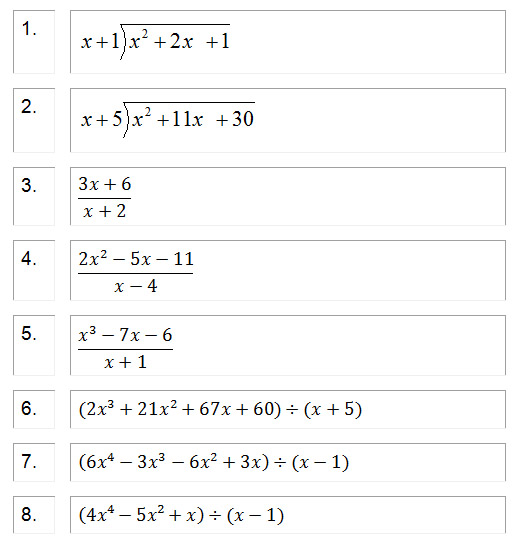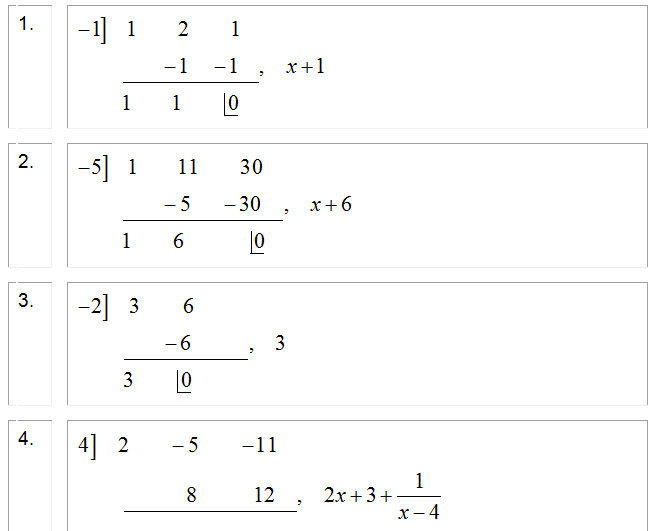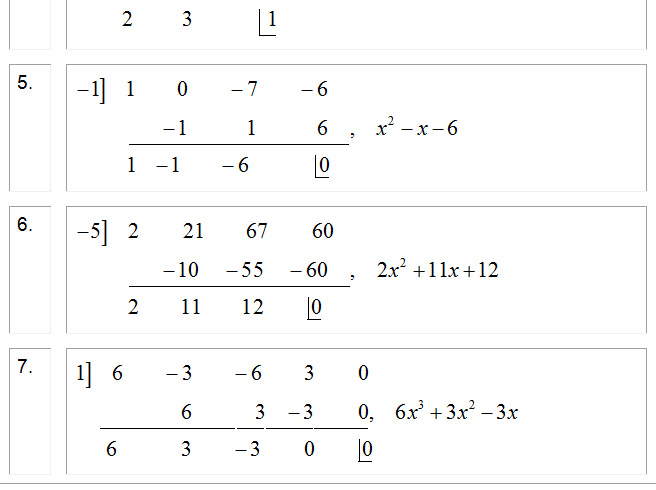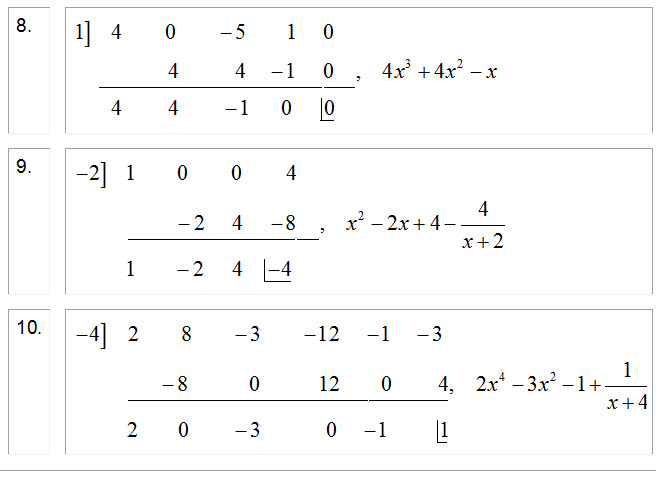Definition
Synthetic division is a process used to divide a polynomial by a binomial of the form, where is a constant, with less clutter than algebraic long division. Here's how synthetic division looks, compared to long division:

Notice that variables are not written in synthetic division, and the quotient (its coefficients) appears at the bottom
of the problem instead of at the top. The number in the bottom right box is the remainder.
The small box contains the negative of the constant coefficient of the divisor (the synthetic divisor). The line of numbers
to the right consists of the coefficients of the dividend. If the coefficient of any of the dividend's terms is 0, this must be
included, as in the second example below. This is the method used to set up synthetic division problems.

Here are the steps used to perform synthetic division:
-
Drop the leading coefficient.
-
Multiply the leading coefficient by the synthetic divisor.
-
Place the result below the next coefficient and add.
-
Multiply the result by the synthetic divisor.
Repeat until there are no more coefficients in the dividend.
The quotient is the polynomial with coefficients given at the bottom, in order from left to right, of order one less than the dividend.
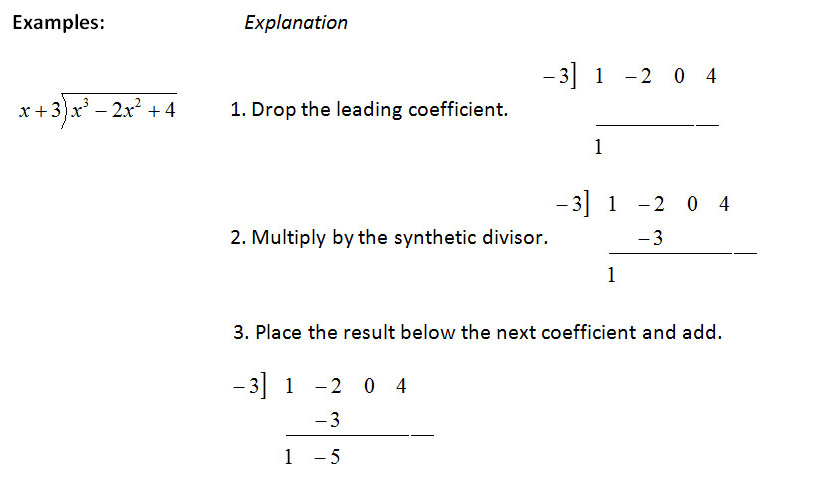
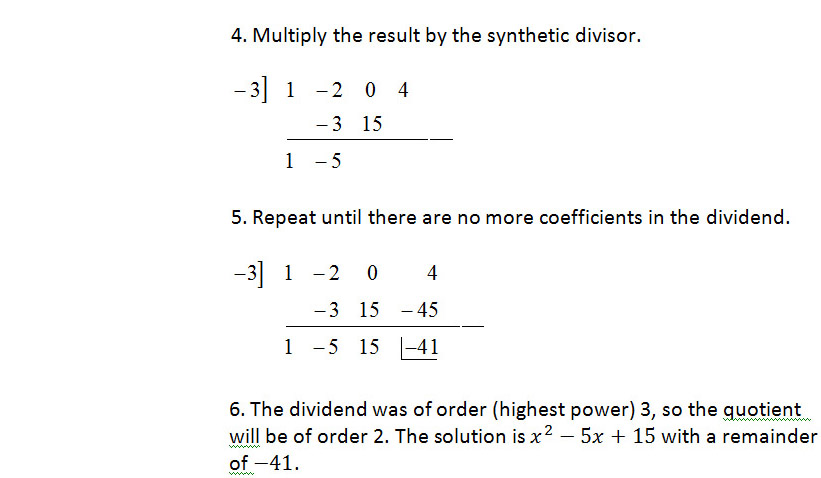
Try these exercises
Instructions
